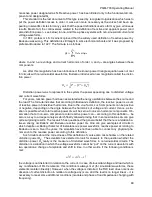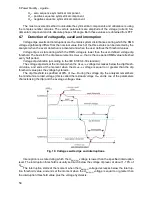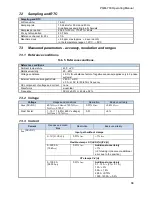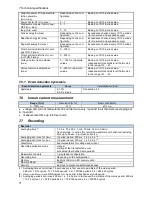
6 Power Quality - a guide
59
U
0
– zero sequence symmetrical component,
U
1
– positive sequence symmetrical component,
U
2
– negative sequence symmetrical component.
The most convenient method to calculate the symmetrical components and unbalance is using
the complex number calculus. The vectors parameters are amplitude of the voltage (current) fun-
damental component and its absolute phase shift angle. Both these values are obtained from FFT.
6.7
Detection of voltage dip, swell and interruption
Voltage dips, swells and interruptions are the mains system disturbances during which the RMS
voltage significantly differs from the nominal value. Each of the three states can be detected by the
analyzer when the event detection is activated and when the user defines the threshold values.
Voltage dip is a state during which the RMS voltage is lower than the user-defined voltage dip
threshold. The basis for the dip measurement is U
RMS(1/2)
, that is the one period RMS value refreshed
every half period.
Voltage dip definition (according to the IEC 61000-4-30 standard):
The voltage dip starts at the moment when the U
RMS(1/2)
voltage decreases below the dip thresh-
old value, and ends at the moment when the U
RMS(1/2)
voltage is equal to or greater than the dip
threshold value plus the voltage hysteresis.
The dip threshold is specified at 90% of U
nom
. During the voltage dip, the analyzer remembers
the minimum recorded voltage (this is called the residual voltage U
res
and is one of the parameters
characterizing the dip) and the average voltage value.
Fig. 19. Voltage swells, dips and interruptions.
Interruption is a state during which the U
RMS(1/2)
voltage is lower than the specified interruption
level. The interruption threshold is usually set much below the voltage dip level, at about 1..10% of
U
nom
.
The interruption starts at the moment when the U
RMS(1/2)
voltage decreases below the interrup-
tion threshold value, and ends at the moment when the U
RMS(1/2)
voltage is equal to or greater than
the interruption threshold value plus the voltage hysteresis.
Summary of Contents for PQM-700
Page 85: ...85 Notes...
















































